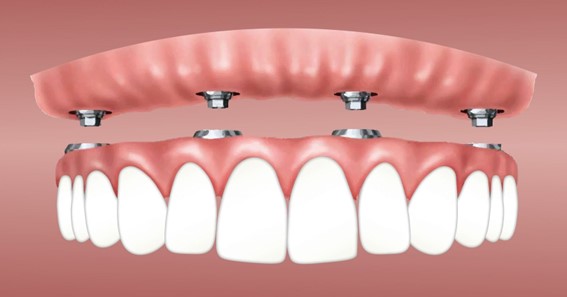Many people go for dental implants to get their smiles back. Dental implants are titanium screws placed in the jawbone to support a false tooth or bridge. The advantage of dental implants is that they look and feel like natural teeth. It comes as no surprise that receiving dental implants has become a popular choice for people who have lost teeth due to injury or disease. However, reputable dentists such as Burbank Dental Lab will tell you that dental implant is a process that needs time.
But how long does the dental implant process take? Typically, the entire process can take 3 – 15 months. However, how long the dental implant process will take will depend on how long each of the stages involved will take.
Here are the different stages of dental implant:
click here – How Is Lincoln-Goldfinch Law Rated?
Stage 1: Consultation and Planning
The first stage of dental implant is consultation and planning. This is where the dentist will check your mouth to ensure you are a good candidate for a dental implant. He or she will also take X-rays and 3D scans of your mouth to determine the best placement for the implants. This stage usually takes one to two visits.
The dental exam will also help the dentist determine if you have any conditions that could affect the success of the dental implant. If you’re looking for a long-term solution for missing teeth, dental implants in Winnipeg may be the perfect option for you. For example, people who have gum disease may need to have it treated before they can get dental implants. The dentist will also assess your jawbone to see if it is strong enough to support the implants. If your jawbone is too weak, you may need a bone graft before getting dental implants.
Also, you can consider all on 4 dental implants for your best dental health.
Stage 2: Surgery
Once the dental exam is done and you have scheduled your surgery, the next stage is the actual surgery. The surgery usually takes place under local anesthesia and sedation. During the surgery, the dentist will make small incisions in your gums and place the implants into your jawbone. The surgery usually takes one to two hours.
After the surgery, you will need to take it easy for a few days. You may experience some swelling and bruises after the surgery, but this is normal. The implants will also need to fuse with your jawbone, which can take four to six months.
Typically, you will need to check in with the dentist a few times during this stage to ensure the healing process is going well.
click here – Do I Need a Financial Advisor for Retirement?
Stage 3: Placing the Restorations
Once the implants have fused with your jawbone, the next stage is to place the restorations. This is where false teeth or a bridge will be placed on the implants. Your restoration will depend on how many teeth you are missing and where they are in your mouth.
The restoration placement usually takes place a few months after the surgery. Giving the implants time to heal properly is vital before placing the restoration. Once the restoration is in place, you will be able to eat, drink, and brush your teeth just like you would with natural teeth.
The healing process will depend on your bone and gum condition. In some cases, the process can take a few months, while in others, it may take up to a year. The average time frame for the entire dental implant process is three to twelve months.
Stage 4: Abutment & Crown Fitting
Once the implants have healed and the abutments are placed, you will need to wait for two to three weeks before getting your permanent crown or bridge. During this time, the gums will heal around the abutments. Once the gums have healed, you will be able to come back for your crown or bridge fitting.
The type of crown or bridge you get will depend on the number of teeth you are missing and where they are located in your mouth. The crown or bridge will be color matched to your existing teeth. The crown or bridge will be placed on the abutments and checked for fit. If everything looks good, the crown or bridge will be cemented in place.
You will need to return for a follow-up visit to ensure everything is healing properly. After that, you can enjoy your new smile.

